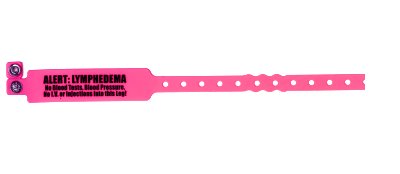|
November 2000 Edition |
This Lymphedema eNews is being generated through your request from our website. Gradient Compression
When lymph nodes are removed during surgery, the lymphatic drainage is altered to the extent that some patients develop lymphedema. The mainstay of treatment for lymphedema is compression, but there are many ways to apply compression. Gradient compression is one method that is useful because the pressure exerted by a column of fluid is greater at the base of the column of fluid. For example, when a person is standing, blood will drain into the legs and the blood has to return to the heart against the force
of gravity. Edema is usually most evident in the ankles because that is where the pressure is the highest. Patients with edema of the ankles will often notice that the edema is worse when they are standing and will improve when they lie down. When the legs are at the level of the heart, there is no column pressure and the edema that has accumulated in the ankles will improve. Therefore, one of the methods for treating edema is to reduce the column pressure by lying down.
When I introduced the ReidSleeve, I designed it to be fully adjustable making it ideal for generating not only accurate levels of compression but accurate compression gradients. I evaluated numerous pressure sensors to determine which would be best for helping measure the compression applied to the skin; however, there are problems with most sensors on the market. Most sensors are not designed for medical use and are either too large or too small. The large sensors do not fit easily under bandages or the R eidSleeve and as a result are hard to use and inaccurate. Small sensors are inaccurate because small changes in the shape or contour of the skin result in much different measurements. Most of the sensors have to be perpendicular to the skin to be accurate so that if the position is slightly twisted, the pressure measurement is inaccurate. 
Many of the sensors had hard or sharp edges and can be hazardous to patients. In addition, most of the sensors did not conform to the contours of the skin and as a result were not accurate. Finally, most of the sensors were very expensive.
To overcome these problems, I turned to a well established technology in medicine, the blood pressure cuff. The soft flexible bladder of a blood pressure cuff conforms to the contours of the skin. Since it is flexible and flat, it fit easily under wraps and the ReidSleeve and since the bladder covers a reasonable surface area, it is accurate and easy to use. In addition, there are accurate and reliable compression gauges for use with the bladder. The Precise compression gauge has been used by thousands of
patients and therapists and can be used with many types of compression garments to determine the pressure that is applied and optimize the compression and gradient. Tony Reid MD Ph.D Indigo Precise Gauge
We are introducing a new version of the Precise, the Indigo Precise with a larger, easy to read dial and a cool Indigo cover for the bladder. The Indigo Precise is ideal for measuring the actual compression applied to the skin so that the correct gradient pressure can be applied at all times and the tourniquet effective can be avoided. The Indigo Precise can help optimize compression so that the best possible results can be achieved. Medical Alertband
Prior to any medical procedure it is imperative that patients with lymphedema or at risk to develop lymphedema, have a mechanism to alert medical professionals of their condition. Many times a patient is sedated or under anesthesia and can not protect or prevent at risk procedures such as, injections, blood draws, IV insertion, blood pressure readings ect. By donning a hot pink Alert Lymphedema band on their wrist or ankle this will alert technicians to the risk. Although there are medical alert jewelry, i
n a medical setting, this can be overlooked as jewelry and not bring the desired attention to the extremity.  Case Update
P.V. has been undergoing Complete Decongestive Therapy and utilizing the ReidSleeve Classic in place of bandaging. P.V. was unable to wrap and subsequent previous treatment failed due to the inability to apply effective compression. Her response to therapy and the ReidSleeve has produced incredible results in a very short time.
| ||




